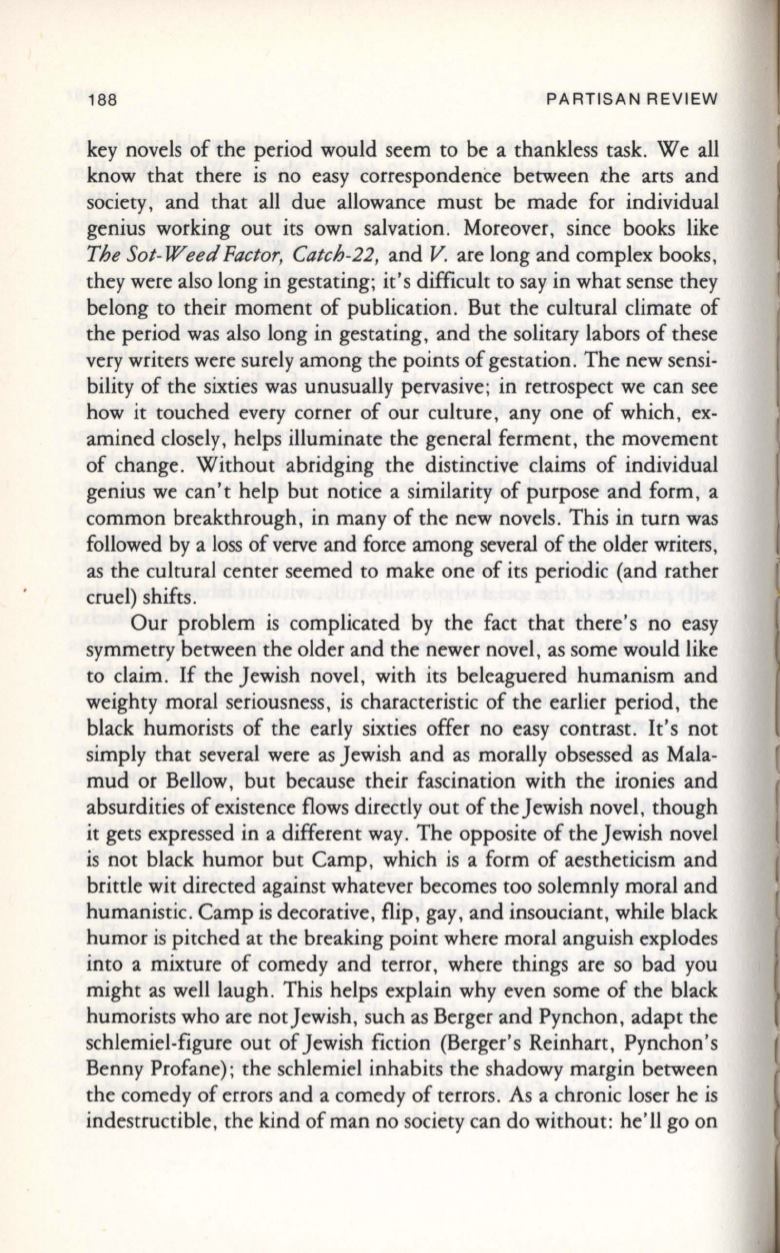
188
PARTISAN REVIEW
key novels of the period would seem to be a thankless task . We all
know that there is no easy correspondence between the arts and
society, and that all due allowance must be made for individual
genius working out its own salvation. Moreover, since books like
The Sot-Weed Factor, Catch-22,
and
V.
are long and complex books,
they were also long in gestating; it's difficult to say in what sense they
belong to their moment of publication . But the cultural climate of
the period was also long in gestating, and the solitary labors of these
very writers were surely among the points of gestation. The new sensi–
bility of the sixties was unusually pervasive ; in retrospect we can see
how it touched every corner of our culture, anyone of which, ex–
amined closely, helps illuminate the general ferment , the movement
of change. Without abridging the distinctive claims of individual
genius we can't help but notice a similarity of purpose and form, a
common breakthrough, in many of the new novels. This in turn was
followed by a loss of verve and force among several of the older writers,
as the cultural center seemed to make one of its periodic (and rather
cruel) shifts .
Our problem is complicated by the fact that there 's no easy
symmetry between the older and the newer novel, as some would like
to claim. If the Jewish novel, with its beleaguered humanism and
weighty moral seriousness, is characteristic of the earlier period, the
black humorists of the early sixties offer no easy contrast. It's not
simply that several were as Jewish and as morally obsessed as Mala–
mud or Bellow, but because their fascination with the ironies and
absurdities of existence flows directly out of the Jewish novel, though
it gets expressed in a different way. The opposite of the Jewish novel
is not black humor but Camp, which is a form of aestheticism and
brittle wit directed against whatever becomes too solemnly moral and
humanistic. Camp is decorative , flip, gay, and insouciant, while black
humor is pitched at the breaking point where moral anguish explodes
into a mixture of comedy and terror, where things are so bad you
might as well laugh . This helps explain why even some of the black
humorists who are notJewish , such as Berger and Pynchon, adapt the
schlemiel-figure out of Jewish fiction (Berger's Reinhart, Pynchon's
Benny Profane); the schlemiel inhabits the shadowy margin between
the comedy of errors and a comedy of terrors . As a chronic loser he is
indestructible , the kind of man no society can do without : he'll go on


